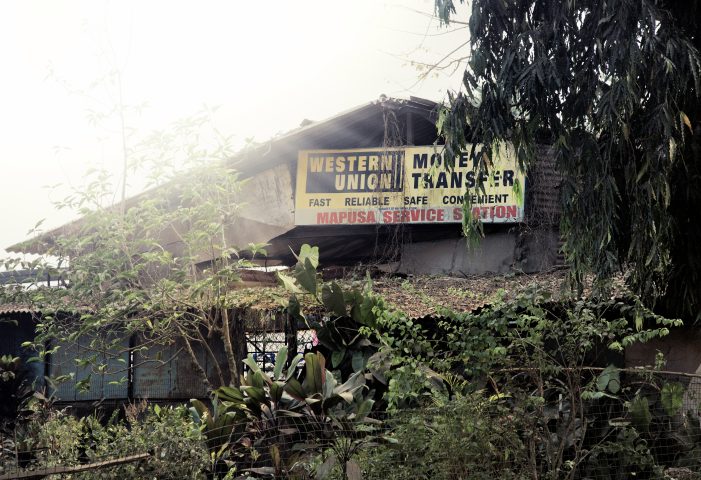Remittances, often defined as the transfer of money by migrants to their home countries, play a vital role in the economies of many developing nations. These transfers, which can consist of cash or goods, are crucial for the welfare and development of the recipient countries. Despite challenges in measuring the exact size of remittance flows due to some being channeled through unofficial routes, officially recorded international migrant remittances were projected to reach $596 billion in 2017, with $450 billion directed towards developing economies. This significant financial influx often surpasses other forms of foreign income, such as direct foreign investments, especially in low and middle-income countries.

Remittances are not only substantial in their volume but are also more uniformly distributed among developing nations compared to other capital flows. For low-income countries, remittances can constitute nearly 4 percent of GDP, a notable contrast to about 1.5 percent in middle-income nations. This financial support is pivotal, particularly in enhancing the living standards and economic stability of the receiving regions.
The typical remittance process involves three steps,
(1) The migrant initiates the transfer through various means such as cash, checks, or digital payments.
(2) The remittance service provider, or sending agent, then instructs their counterpart in the recipient’s country to make the payment available.
(3) The local agent disburses the funds to the intended recipient, often in the local currency.
This system relies on periodic settlements between remittance agents rather than real-time funds transfers, with commercial banks frequently facilitating these settlements. While formal channels are prevalent, informal remittances facilitated through trade or other means still represent a significant portion of the money sent home.
The big players in the remittance industry
Remittances are an integral part of the global economy, especially in developing countries. The industry not only supports millions of families in lower-income countries but also contributes significantly to their economic development. Some of the biggest players in the remittance industry are known for their extensive networks and innovative financial solutions that help simplify and secure the process of sending money across borders.
Western Union
Western Union is one of the oldest and most established names in international money transfers. Founded in 1851 as a telegraph company, it has evolved into a global leader in cross-border, cross-currency money movement. Western Union operates in over 200 countries and territories and has a vast network of over half a million agents. It offers services allowing customers to send money online, via mobile apps, and in person, reaching millions of people worldwide.
MoneyGram
MoneyGram is another major player, known for its widespread international presence in more than 200 countries and territories. Founded in 1940, MoneyGram has grown to become the second-largest provider of money transfers in the world. The company offers both online and walk-in services for sending and receiving money, and it has been working on expanding its digital solutions to make transactions more accessible and convenient.
PayPal/Xoom
PayPal, widely recognized for its online payment solutions, acquired Xoom in 2015, thereby entering the remittance market. Xoom allows users to send money, pay bills, and reload mobile phones from the United States to 131 countries. With PayPal’s backing, Xoom has expanded its presence and now offers features like direct bank deposits and cash pickups, making international transfers easier and more user-friendly.
Wise (formerly TransferWise)
Founded in 2011, Wise has made a name for itself by offering low-cost international money transfers. What sets Wise apart is its use of real mid-market exchange rates without hidden fees, which often makes it cheaper than traditional players. Wise prides itself on transparency and efficiency and has grown rapidly, now serving millions of customers worldwide with its innovative, customer-friendly platform.
Remitly
Established in 2011, Remitly is a newer player that targets immigrants in developed countries looking to send money home quickly and affordably. Remitly offers transfers from 17 sending countries to over 50 receiving countries, emphasizing security, speed, and low fees. The company has been growing steadily, driven by a focus on mobile technology and an excellent customer service reputation.
WorldRemit
WorldRemit, founded in 2010, is known for its mobile-first approach to remittances. It allows users to send money from 50 countries to recipients in over 150 countries. WorldRemit has made significant inroads in digital transfers, particularly in Africa, where it taps into mobile money accounts, offering a convenient alternative to traditional cash pickups.
These companies have significantly shaped the remittance landscape by innovating and providing essential services that facilitate economic support across the globe. Their efforts have not only helped bridge financial gaps but have also contributed to the financial inclusion of underserved populations by making cross-border transactions more accessible and affordable.
Who are the vital but smaller players in the industry?
In addition to the global giants in the remittance industry, there are several smaller but critical players that cater specifically to certain diaspora communities, providing essential services that connect migrants with their families back home. These companies often focus on particular regions or countries, and they play a pivotal role in the economic circuits of those areas.
Dahabshiil
One of the largest Africa-based money transfer businesses, Dahabshiil serves a vast customer base of migrants from East Africa. Founded in the 1970s in Somalia, Dahabshiil has grown to operate in 126 countries, with a strong presence in Somalia and neighboring countries. It provides crucial remittance services to people who might otherwise have limited access to formal banking services. Dahabshiil is particularly noted for its role in the economic development and humanitarian aid process within the Horn of Africa, often being the lifeline for many families.
Ria Money Transfer
While not as large as Western Union or MoneyGram, Ria Money Transfer is a significant player in the remittance market that provides services in 160 countries. Established in 1987, Ria has grown to become the third-largest money transfer service in the world. It offers competitive rates and fees, with a strong focus on Latin America and the Philippines, catering effectively to the specific needs of these diaspora communities.
Al Ansari Exchange
Based in the UAE, Al Ansari Exchange is a leading remittance service provider in the Middle East, catering primarily to the vast South Asian expatriate community in the region. With more than 190 branches, Al Ansari Exchange facilitates seamless remittances to countries like India, Pakistan, Bangladesh, and the Philippines, offering a range of financial services that include foreign currency exchange and bill payments.
LBC Express
Originating from the Philippines, LBC Express offers cargo and courier services in addition to its remittance offerings. It is particularly crucial for the Filipino diaspora, providing a reliable channel for both document and money remittances across the globe. LBC’s strong presence in the Philippines and other countries like the USA, Canada, and Australia makes it a vital player in the Filipino community.
Unistream
Focused predominantly on the Russian and CIS markets, Unistream allows migrants within these regions to send money across a network spread over 90 countries. It offers competitive fees and has developed a robust system that supports various remittance needs, making it a preferred choice among migrants from former Soviet states.
TransferGo
Based in the UK, TransferGo offers remittance services to over 2.5 million customers, focusing on providing fast and affordable transfers to Eastern European countries, including Poland, Romania, and Hungary. TransferGo appeals to EU migrants by offering next-day transfers at low costs, which is critical for those supporting families back home.
These smaller, targeted service providers are essential components of the remittance landscape, especially for diaspora communities that might not be as well served by the larger global players. They ensure that migrants can send support to their families, contributing significantly to the economies of their home countries and maintaining strong cultural and economic ties across borders.
Costs and Economic Impact
The costs associated with remittances include fees charged by the sending agency and currency conversion charges. These costs can vary widely, with some smaller operators even charging the recipients a collection fee to mitigate risks associated with currency fluctuations. Moreover, remittance agencies, particularly banks, may also earn from the time gap between receiving and disbursing the funds, benefiting from overnight interest rates which can be substantial in certain regions.
Remittances, or the transfer of money by foreign workers to individuals in their home countries, play a critical role in the global economy. Each year, on June 16, the world observes the International Day of Family Remittances (IDFR) to honor the hard work and sacrifice of millions of migrants who financially support their families back home. This day highlights not only the resilience of migrant workers but also the significant impact of their contributions.
Globally, an estimated one billion people—one in every eight—depend on remittances. In 2022 alone, according to the World Bank, remittances to low- and middle-income countries reached a staggering $647 billion, marking an 8% increase from the previous year. This growth occurred despite global economic uncertainties, including pandemics and political instability, demonstrating the essential nature of these financial flows.
Migrant workers typically send home between $200 to $300 every one to two months, which might represent only about 15% of their earnings. However, these funds often constitute up to 60% of the total income for their families, serving as a crucial lifeline for millions around the world. The funds are primarily used to cover basic needs such as food, healthcare, and education, with about 75% of remittances allocated for immediate daily expenses. The remainder can be saved or invested in larger economic activities or emergencies such as family or natural crises.
The impact of remittances extends beyond individual households to entire economies. More than 70 countries rely on these funds for at least 4% of their GDP. This economic input is particularly transformative in rural areas, where poverty and lack of financial services are more acute. Over the next five years, the accumulated flows to rural areas are expected to reach approximately $3 trillion, underscoring the significant role remittances play in socio-economic growth and transformation.
The evolution of technology has dramatically shaped the landscape of remittances. The amount of money sent via mobile transfers, for instance, increased by 65% to $12.7 billion in 2020 and grew again to $16 billion in 2021. These advancements promise to make remittances faster, cheaper, and more secure. However, the cost of sending remittances can still be high—fees and currency conversion can consume about 6% of the transferred amount. There is significant potential for innovative digital financial services to reduce these costs.
Looking to the future, between 2022 and 2030, an estimated $5.4 trillion will be sent back home by migrant workers. Of this, approximately $1.5 trillion will be either saved or invested back into the communities of origin, highlighting the profound influence remittances will continue to have on global development. These contributions directly support several Sustainable Development Goals (SDGs), including no poverty, zero hunger, good health, quality education, and reduced inequalities among others.
Strategic partnerships among governments, financial institutions, and international organizations are crucial for streamlining the process of remitting money, making it more accessible and less costly for individuals around the world. The shift towards digital remittances offers potential to transform rural economies by providing faster access to funds and reducing the need for recipients to travel long distances. This access is crucial for fostering local economies and supporting rural development in impoverished areas.
In summary, remittances are not just financial transactions but a vital component of the global economy that supports families and fuels economic development. As technology continues to evolve, the focus on reducing costs and increasing efficiency will likely bring even greater benefits to those who rely on these essential funds.




